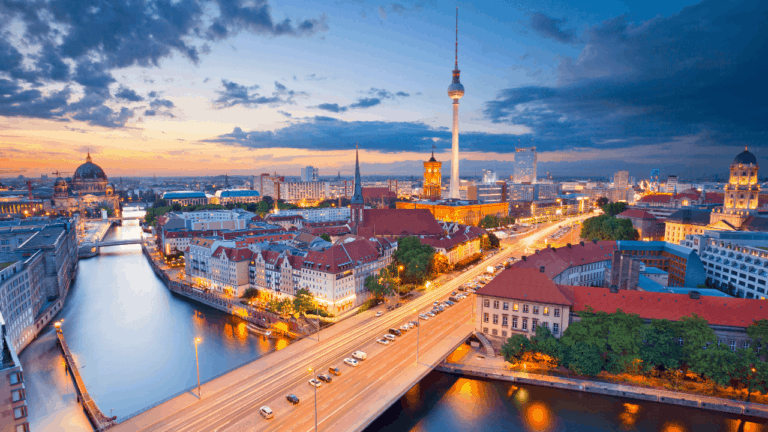Berlin is a world city and a first-rate cultural and artistic center. It is one of the most influential cities in the political field of the European Union and in 2006 it was elected Creative City by Unesco.
Berlin’s cultural scene continues to put on new accents. Whether you are a theater buff or a museum visitor, a nightclub aficionado or a cabaret lover: everyone will find the right event here, and every day again!
Berlin is home to 365 museums. The complex on Museum Island is a UNESCO World Heritage Site and is located in the northern part of Spree Island between the Spree and the Kupfergraben. Already in 1841 it was named «district dedicated to art and antiquities» by a royal decree. Consequently, the Altes Museum (Old Museum) in the Lustgarten, the Neues Museum (New Museum) showing the bust of Queen Nefertiti, Old National Gallery of Berlin, Pergamon Museum and the Bode Museum were erected there. The names of the buildings do not necessarily correspond to the content of the collections they exhibited.
You can visit places of interest such as the Berlin Wall: There are still some sections of this construction that divided not only the city of Berlin, but also the world into two diametrically opposed ideologies. On Mühlenstraße you can see a stretch of more than a kilometer of this relic of the past. Checkpoint Charlie, which was one of the access points for foreigners in East Berlin and a clandestine escape point for some inhabitants of the GDR, is also preserved in good condition. Currently next to Checkpoint Charlie is a museum dedicated to the history of the wall and those who in various ways tried to cross it.
The Brandenburg Gate, a monument located a few meters from the collapsed wall, in the no man’s land between the wall itself and the barracks and watchtowers of the police (Volkspolizei) of the GDR; today it is a symbol of the reunification of the country.
The Reichstag since 1999 is again the seat of the federal parliament, called the Bundestag. In its reconstruction, only the outer walls were left; the interior is brand new. Its glass dome is accessible to the public and offers a magnificent panoramic view of the city, especially at night.
The Holocaust Memorial: The 2711 concrete blocks recall the horrors of the Jewish Holocaust by Nazism. This monument, designed by the architect Peter Eisenman, is located a few meters from the Brandenburg Gate.
The city has natural areas as well; The Permanent Forest contract was a 1915 agreement between Berlin and Prussia for the acquisition of forest around the city. The term Permanent Forest, as part of the name of the contract, refers to its purpose of remaining unchanged over time.
In contrast to the central and eastern parts of the city, which are densely urbanized, the western areas open to forested green areas, with the lakes fed by the rivers Spree and Havel, which offer the visitor places of leisure and natural spaces.
Tiergarten is a large park located in the city center. In its early years it was a hunting area and later became a large green area for the use and enjoyment of Berliners.
The Botanical Garden is one of the largest and best known in Europe; it also has an important collection of prepared plants and a specialized library.
Berlin cuisine delights and satisfies its visitors with its culinary specialties.
The gastronomy of Berlin is widely influenced by that of the Brandenburg region, including among its main ingredients meats, such as pork, poultry and white fish, also present vegetables and legumes, being unmissable cabbage, turnips and potatoes.

